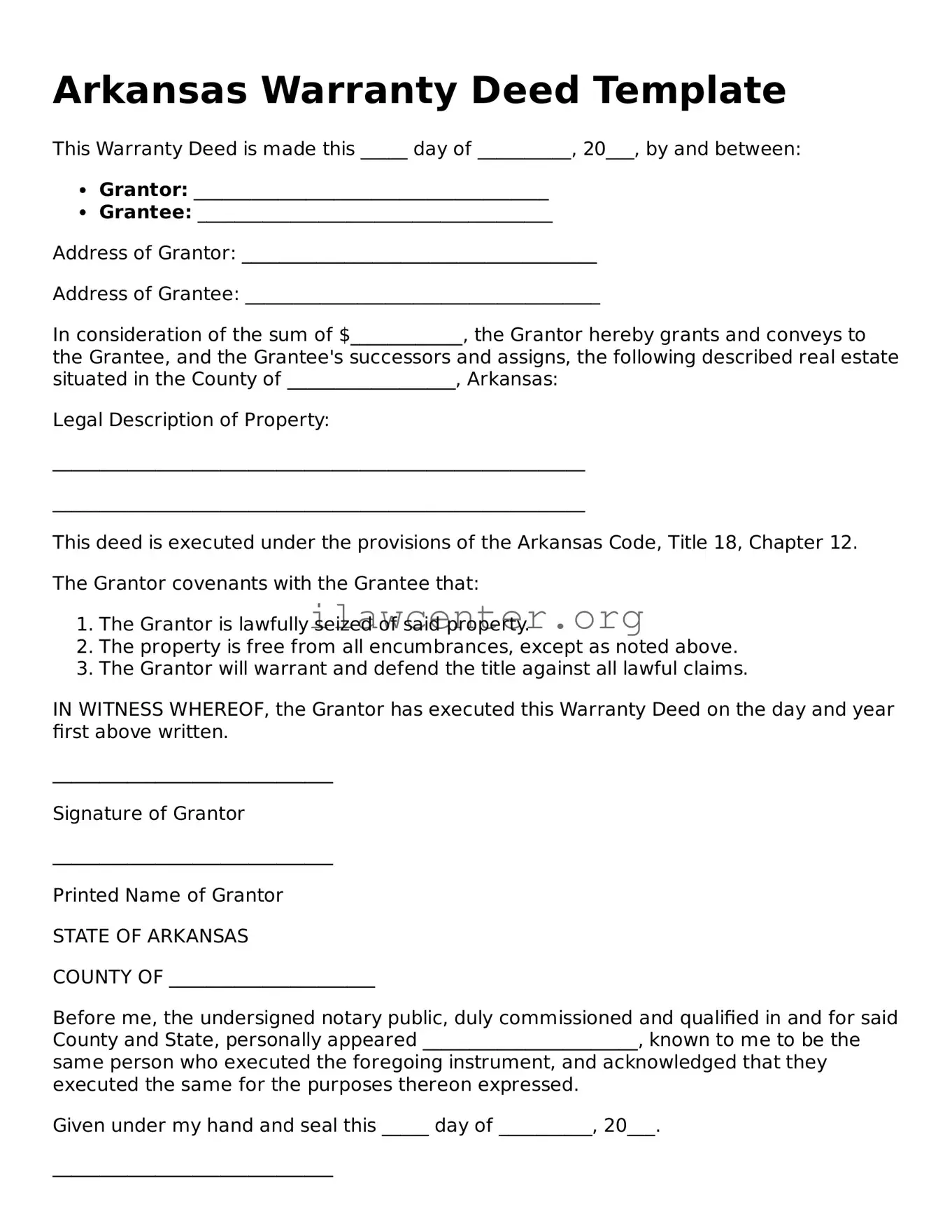Instructions on Utilizing Arkansas Deed
After selecting the Arkansas Deed form, you’ll begin the process of transferring property ownership. It's essential to fill out the form accurately to ensure a smooth transfer. Follow these steps to complete the form correctly.
- Begin by entering the full names of the grantor(s), the person(s) transferring the property. Ensure their names are spelled correctly.
- Next, list the full names of the grantee(s), the person(s) receiving the property. Double-check for spelling errors.
- Indicate the address of the property being transferred, including any relevant details like city or county.
- Provide the legal description of the property. This may require a bit of research, as it should clearly define the property boundaries.
- Fill in the consideration amount, which is the value exchanged for the property. This could be a dollar amount or a description of what is being given in return.
- Include the date of signing and any required signatures from all parties involved in the transfer.
- Finally, secure any necessary witnesses or notary signatures as required by Arkansas law.
With the form completed, it should be submitted to your local county clerk's office for recording. This will ensure that the transfer is officially documented and recognized by the state.
